








































Introduction
Established in 2007, Kirk Kapital’s heritage stretches back much further to 1932, when Ole Kirk Christiansen started making wooden toys in his workshop. In 1934, Ole began selling them under the now world-famous name, LEGO.
Today, almost 90 years later, our heritage of imagination and ingenuity is what forms the foundation of Kirk Kapital’s unique business.
Kirk Kapital’s shareholders, the Kirk Johansen family, are Ole Kirk Christiansen’s descendants.
As well as managing the family office services for our shareholders, we specialise in financial investments and strategic minority investments in tomorrow’s best companies, under the motto:
We invest, collaborate and create.
Our purpose is to create longterm prosperity for the families of our shareholders, partners and employees.
While we are patient and longer-term focused, we are very pleased and proud to state that our Investment Result in 2019 was DKK 797 million, which is the highest level recognised in the history of Kirk Kapital. The result was driven both by our Strategic Investments and our Financial Investments, while our Vejle Investments contributed negatively.
We have, during the year, decreased our capital allocation
to Vejle Investments while we have increased our allocation to both Strategic Investments and Financial Investments. We have continued our process of disposing of assets not in line with our investment strategy and redeployed capital in line with our strategy.
In April 2019, it was announced that we had entered into an asset management agreement with the Nissen family. With this initiative, Kirk Kapital is leveraging its capabilities and investment platform as well as its systems and processes. This, to the benefit of all stakeholders.
In summary, it has been a very satisfactory year.
In light of the COVID-19 situation, it is not possible to provide any guidance on our expectations to Kirk Kapital’s financial performance for 2020. We are currently in an unfortunate turbulent environment, with volatile financial markets and an uncertain business climate. The potential negative implications on the financial performance for 2020 are unknown but can be significant. Besides the COVID-19, no events have occurred after the balance sheet date which is considered to have a material impact on the assessment of the Annual Report.

Kirk Kapital is a trusted leader within larger minority investments with an active ownership agenda. Our scope is medium- and largersized companies which have market-leading positions in longerterm growth industries, primarily with headquarter in Scandinavia.
Our larger minority equity portfolio currently includes a range of 11 companies within business services and light manufacturing. In 2019, we added 3 companies to our portfolio, namely, Scanmetals, TP Aerospace and TITAN Containers. In February 2020 we divested our shareholding in PNO.
Our Investment Result in 2019 is DKK 647 million and the asset base by year-end is DKK 3,060 million.
The performance is well above our expectations for 2019 and our longer-term expectations. The positive development is derived from a broad positive contribution from the portfolio companies.
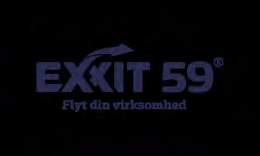
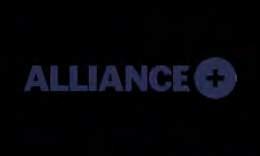
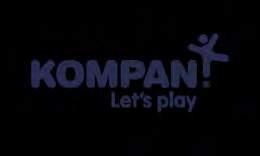


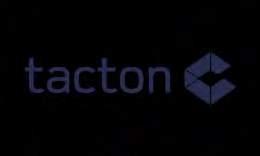


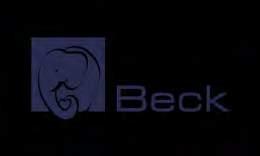

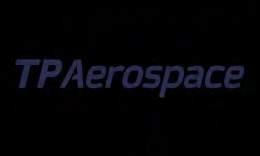
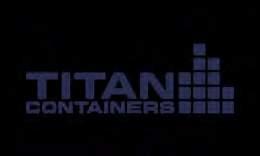
Kirk Kapital manages multiple individual portfolios tailored to our partners’ precise needs. All portfolios managed, consist of a wide range of investments including both listed equities, fixed income, and alternatives. The portfolios represent, in total, a value above 5 billion. The largest portfolio is Kirk Kapital’s own Financial Investments portfolio, which represents 37% of Kirk Kapital’s own asset base.
Kirk Kapital’s own Financial Investments portfolio generated a result in 2019 of DKK 211 million and the asset base by year-end is DKK 2,108 million. We have benefitted from the very favourable market development across most asset classes. Simultaneously, we chose to exit several of our old illiquid investment commitments and in this regard recorded a loss. Adjusted for these one-time effects, we have delivered a result better than our expectations.
Kirk Kapital has a number of investments in the Vejle area. This is due to our continued support and veneration to the community in Vejle.
Our Investment Result in 2019 is DKK -61 million and our net asset base is DKK 565 million. The result is negatively impacted by a one-off write-down but otherwise in line with our expectations.
Kirk Kapital is in the process of finalising the development of Havneøen, a project which has been under development for a number of years. In this connection, we are very pleased to see how positively the local community has embraced our new headquarter, Fjordenhus, and its surroundings. The ground floor of Fjordenhus is an integral part of the publicly accessible space in Vejle, and we are very pleased to observe that around 185.000 people in 2019 have chosen to spend time at Fjordenhus.
Kirk Kapital’s purpose is to create long-term prosperity for the families of our shareholders, partners and employees. We manage and grow family-owned capital, based on strong family values.
Within Strategic Investments, our investment scope is Scandinavian medium- and largersized companies having marketleading positions in long-term growth industries. Our minority equity portfolio currently includes a range of businessto-business companies within services and light manufacturing.
We aim to expand this portfolio in the years to come. Our unique model for active minority investment ensures the independence of our partners, while creating the best possible conditions for their lasting success. We achieve this by providing active board representation, the benefits of our toolbox and shared best practice across our portfolio. Common to all cases is a tailored approach, closely calibrated with our partners’ requirements and wishes. Altogether, this creates the best conditions for each company’s long-term growth.
Within Financial Investments, we manage multiple individual portfolios which we seek to tailor to our partners’ precise needs. The portfolios consist of a wide range of investments including both listed equities, fixed income, and alternatives.
Within Vejle Investments, we seek to support our long-term commitment to Fjordenhus and the finalisation of the development of Havneøen. This is due to our veneration and continued support to the community in Vejle. Strategy Strategic Investments Key Scope Geographic

It is Kirk Kapital’s clearly defined intention to run a responsible business in every respect and at any time. Our organisation handling our activities, and our directly controlled subsidiaries, is small, consisting of 27 employees. In this light, values and expectation in relation to social responsibility are informally shared.
Besides our IT policy, employee handbook and data policy, Kirk Kapital, and its directly controlled subsidiaries, has at this point no other formalised policies regarding CSR. The reasons for this are further addressed below for each subject matter.
Kirk Kapital’s activities consist of larger minority shareholdings and investments in non-controlled financial investments. Although due consideration to CSR have been given to all of our investments, Kirk Kapital is currently working on formalising an investment policy more formally stipulating our CSR values together with strengthening our compliance policies.
Human rights
Informally Kirk Kapital, and its directly controlled entities, has been evaluating our risk of
violating any human rights in connection with its business activities. Since we are conducting our business under Danish legislation, which is highly regulated with regards to human rights, the risk of violating human rights is considered low.
Environment
Kirk Kapital, and its directly controlled subsidiaries, has little risk of abnormal negative environmental impact since Kirk Kapital, and its directly controlled subsidiarises, is conducting its main activities in Denmark where legislation provides guidelines and restrictions on good environmental behaviour.
Anti-corruption and compliance
Kirk Kapital, and its directly controlled subsidiaries, has a limited amount of business partners and aims to always comply with current legislation and guidelines regarding anticorruption issues. Due to the limited amount of business partners, the risk of violating anti-corruption legislation is considered low.
In 2019, Kirk Kapital started a process of updating and formalising existing compliance procedures as well as establishing formal policies in areas with
only informal procedures.
To further strengthen this process in 2020, Kirk Kapital has hired a Head of Legal and Compliance.
Employees including statement on gender composition
Since the establishment of Kirk Kapital in 2007, employee welfare has been a prioritised focus. We have a family-like and trust-based working environment. Our employee policy consists of an employee handbook made available to the employees. The employee handbook provides practical guidance and rules on various employee topics, for example work environment and professional development.
The most significant risks to our employee’s welfare are considered to be work overload and stress. A small and flat organisation enables management to observe the risks on a continuous basis. In 2019, Kirk Kapital implemented a formal anonymous employee satisfaction survey, which will be performed yearly, to verify management observations and detect improvement areas early. In 2019, the employee survey concluded that the employees were very satisfied overall.
We do our outmost to treat employees equally and always to select candidates based on qualifications and suitability. This has always been the case in the past and will also be the case in the future.
The distribution of female/ male members on the Parent Company’s Board of Directors
is 25%/75%, which is defined as equal distribution of gender according to guidelines issued by the Danish Business Authority. Therefore, no further reporting on Board of Directors level is performed.
As Kirk Kapital, during the financial year, has had less than 50 employees, we have not
prepared a policy on the gender distribution on other management levels, in accordance with the rules.
Business and Financial Risk
As a family-owned business and investment company we are widely exposed to financial risks, especially relating market risk, with an exposure to publicly traded securities.
Our three investment departments are managing financial risks with the objective to create long-term prosperity for the families of our partners. In this light, we have not taken any risks that could be referred as special considering the extent
of our activities as an investment company.
For further information about financial risk management we refer to note 20 in the Group’s financial statements.

Accounting policies Critical accounting estimates and judgements
Investments Financial Investments Vejle Investments
expenses Income tax
Strategic Investments
Financial Investments
Vejle Investments
Property, plant and equipment
Investment properties
Investments in subsidiaries
Investment in associates and joint ventures at fair value
Other equity investments
Lease assets - right-of-use assets
Deferred tax
Share capital
Related parties
Commitments and contingent liabilities
Financial risk management
Lease liabilities
Events after the balance sheet date
1Accounting policies
The financial statements are presented in Danish Kroner (DKK), as this is the Company's functional currency.
The financial statements have been rounded to the nearest million.
The financial statements of the Parent Company have been prepared in accordance with International Financial Reporting Standards (IFRS) as adopted by the EU and additional Danish disclosure requirements.
The accounting policies are the same as for the Consolidated Financial Statements, refer to note 1 for the Group.
2Critical accounting estimates and judgements
Critical accounting estimates and judgements is specified in the Consolidated Financial Statements, refer to note 2 for the Group.
3Strategic Investments
Income from subsidiaries
Income
Investment properties consists of rental properties together with forest and agriculture land. Geographical the properties are located either in Vejle or in the vicinity of Vejle.
Investment properties are on initial recongnition measured at fair value using generally accepted valuation methods. The fair value of rental properties is determined by using either an income capitalization model or basis valuation carried out by independent valuers.
Buildings valued using a capitalizations model is measured at an average rate of return of 6.5% to 7.0%. The average rate of return used, is based on an assessment of locations and condition. A change of the rate of return of 0.5% will impact the value of rental property of approx. DKK 3 million before tax.
The fair value of the forest and agriculture land is estimated at DKK 115,000 per hectare (2018: 115,000 per hectare). A change of the price per hectare of 1% will impact the value of the forest and agriculture land of approx DKK 0.6 million before tax.
14Investments in subsidiaries
Equity investments with negative net asset value transferred to provisions
in subsidiaries are specified in the Consolidated Financial Statements, refer to note 24 for the Group.
15Investment in associates and joint ventures at fair value
19 Share capital
The share capital comprise:
There have been no changes in the share capital during the last 5 years.
Each A share has 10 votes at the annual general meeting. Each B share has 1 vote at the annual general meeting.
20Related parties
Related parties are specified in the Consolidated Financial Statements, refer to note 18 for the Group.
Transactions with related parties:
Year-end balances arising from transactions with related parties:
Other related parties
No other year-end balances or transactions have taken place during the year with the Board of Directors, the Executive Management, major shareholders or other related parties.
Contingent liabilities
Contingent liabilities and remaining commitment regarding participation in investment projects amount to a maximum of DKK 415m.
Sercurity has been given in investments properties at a net carrying amount of DKK 61m for the mortgage loans.
The Parent Company has provided a guarantee of a maximum of DKK 334m to financial institutions in which the Company's subsidiaries and associates have loans and other engagements.
The Parent Company has entered into a cash pool agreement. As per. 31 December 2019 the net withdrawl on the cashpool aregreement was DKK 174m.
Joint taxation scheme
The Danish group companies are jointly and severally liable for tax on the jointly taxed incomes etc. of the Group. The total amount of corporation tax payable by the Group is disclosed in the Financial Statements for KIRK KAPITAL A/S, which is the management company of the joint taxation. The Danish companies are joint and several liable for the joint taxation liability. The joint taxation liability covers income taxes and withholding taxes on dividends, royalties and interest.
Financial risk factors
Financial risk factors, market risk, credit risks and liquidity risk are specified in the Consolidated Financial Statements, refer to note 20 for the Group.
Maturity analysis
The table below analyses the Parent Company’s financial liabilities into relevant maturity groupings based on the remaining period at the balance sheet date to the contractual maturity date. The amounts disclosed in the table are the contractual undiscounted cash flows.
Non-derivatives
As at 31.12.2019
23Lease liabilities
expiring within the following periods from the balance sheet date:
In 2019 the Parent has paid DKK 1,8m regarding lease agreements where of interest expenses related to lease liabilities amount to DKK 0,2m and repayment of lease liability amount to DKK 1,6m.
24Events after the balance sheet date
No events materially affecting the assessment of the Annual Report have occurred after the balance sheet date.

Balance sheet
* The company has implemented IFRS on 01.01.2017. The comparative figures for 2015 and 2016 are presented according to Danish GAAP.
The comparative figures in the 2015 have not been restated with discontinuing activities.
Accounting policies
Critical accounting estimates and judgements
Revenue
Staff expenses
Amortisation, depreciation and impairment losses
Financial income
Financial expenses
Income tax
Discontinued operations
Property, plant, equipment and lease assets
Investment properties
Investment in associates and joint ventures at fair value
Investment in associates and joint ventures at equity method
Other equity investments
Deferred tax
Inventories
Share capital
Related parties
Commitments and contingent liabilities
Financial risk management
Fee to auditors appointed at the general meeting
Lease liabilities
Events after the balance sheet date
List of group companies
1 Accounting policies
The Consolidated Financial Statements are presented in Danish Kroner (DKK), as this is the Group's functional currency. The Consolidated Financial Statements have been rounded to the nearest million.
The consolidated and separate financial statements for KIRK KAPITAL A/S have been prepared in accordance with International Financial Reporting Standards (IFRS) as issued by the International Accounting Standards Board (IASB) and as adopted by the European Union as well as additional Danish disclosure requirements applying to entities of reporting class C for large enterprises.
Adoption of new and amended standards
IFRS 16 has been implemented as of 1 January 2019.
KIRK KAPITAL has adopted IFRS 16 using the modified retrospective approach according to which the comparative figures are not restated but presented in accordance with the previous IFRS standard on leases (IAS 17 IFRS 16 replaces IAS 17 Leases, and sets out the principles for the recognition, measurement, presentation and disclosure of leases and will result in almost all leases being recognized on the balance sheet by lessees, as the distinction between operating and finance leases is removed for lessees. Under this new standard, an asset (the right to use the leased item) and a financial liability to make lease payments are recognized for all leases with a term of more than 12 months unless the leased asset is of low value. Accordingly, the Companies leases were recognized in the balance sheet at 1 January 2019 in the form of right of use assets and lease liabilities.
As regards the income statement, IFRS 16 implementation has resulted in lease expenses being replaced by depreciation of right of use assets and interest on lease liabilities. The recognition of lease assets and lease liabilities, respectively, resulted in an increase of the Companies total assets and liabilities of DKK 4 million at 1 January 2019. The amount is specified below:
Lease liabilities 31 December 2018 as disclosed in the annual report 2018
Short-term leases (less than 12 months) & leases of low value
Discounting
Lease liabilities recognized at 1 January 2019
DKK 4m
DKK 0m
DKK 0m
DKK 4m
There are no other IFRSs or IFRIC interpretations that are not yet effective which are expected to have a material impact on the Company.
Basis of consolidation
The Consolidated Financial Statements comprise the Parent Company, KIRK KAPITAL A/S, and subsidiaries in which the Parent Company directly or indirectly holds more than 50 % of the votes or in which the Parent Company, through share ownership or otherwise, exercises control. Subsidiaries are fully consolidated from the date on which control is transferred to the group. They are deconsolidated from the date that control ceases.
On consolidation, elimination is made of intra-group income and costs, shareholdings, intra-group balances and dividend and realized and unrealized profits or losses on transactions between the consolidated companies.
Elimination is made of intercompany income and expenses, shareholdings, dividends and accounts as well as of realised and unrealised profits and losses on transactions between the consolidated enterprises.
Foreign currency translation
Transactions and balances
Transactions in currencies other than the entity's functional currency are translated into the functional currency using the exchange rates at the dates of the transactions. Foreign exchange gains and losses resulting from the settlement of such transactions and from the translation of monetary assets and liabilities denominated in foreign currencies at year end exchange rates are generally recognised in profit or loss.
Revenue
Rental income under operating leases is recognised straight line over the term of the contract. Revenue from sale of apartments are recognised at a point in time when control of the apartment is transferred.
Revenue is measured as the fair value of the consideration received or receivable. Revenue is measured exclusive of VAT, taxes etc.
Value adjustments of investments
The value adjustment of investments in associates and portfolio companies comprises value adjustment realized from sale and unrealised value adjustments from any revaluation or impairment of investments in portfolio companies at fair value. Dividend received from investments are included in value adjustments.
Expenses for raw materials and consumables comprise the raw materials and consumables consumed to achieve revenue for the year.
Other external expenses
Other external expenses comprise expenses for premises, office expenses, etc.
Staff expenses
Staff expenses comprise wages and salaries as well as payroll expenses.
Other operating income and expenses
Other operating income and other expenses comprise items of a secondary nature to the main activities of the Company, including gains and losses on the sale of intangible assets and property, plant and equipment.
Special items comprise items which are unusual or expected to be non-recurring. They have in the Income statement been isolated in order to give a more true and fair reflection on underlying business activities. Such costs are typically restructuring, impairment losses, discontinuing operations and similar.
Financial income and expenses include interest, financial gains and expenses with respect to finance leases, debt, realised and unrealised exchange adjustments, price adjustment of securities, amortisation of mortgage loans as well as additional payments and repayment under the tax prepayment scheme.
The company is jointly taxed with Danish Group enterprises. The Danish income tax payable is allocated between the jointly taxed Danish companies based on their proportion of taxable income (full absorption including reimbursement of tax deficits). The jointly taxed companies are taxed under the Danish Tax Payment Scheme. Additions, deductions and allowances are recognised under financial income or financial costs.
The income tax expense or credit for the period is the tax payable on the current period’s taxable income based on the applicable income tax rate for each jurisdiction adjusted by changes in deferred tax assets and liabilities attributable to temporary differences and to unused tax losses.
The current income tax charge is calculated on the basis of the tax laws enacted or substantively enacted at the balance sheet date in the countries where the Company operate and generate taxable income. Management periodically evaluates positions taken in tax returns with respect to situations in which applicable tax regulation is subject to interpretation. It establishes provisions, where appropriate, on the basis of amounts expected to be paid to the tax authorities.
Deferred income tax is recognised on temporary differences arising between the tax bases of assets and liabilities and their carrying amounts in the Financial Statements. Deferred income tax is determined using tax rates (and laws) that have been enacted or substantively enacted by the balance sheet date and are expected to apply when the related deferred income tax asset is realised or the deferred income tax liability is settled.
Deferred income tax assets are recognised only to the extent that it is probable that future taxable profit will be available, against which the temporary differences can be utilised.
Deferred income tax liabilities are provided on taxable temporary differences arising from investments in subsidiaries, except for deferred income tax liability where the timing of the reversal of the temporary difference is controlled by the Company and it is probable that the temporary difference will not reverse in the foreseeable future.
Deferred income tax assets and liabilities are offset when there is a legally enforceable right to offset current tax assets against current tax liabilities and when the deferred income tax assets and liabilities relate to income taxes levied by the same taxation authority on either the same taxable entity or different taxable entities where there is an intention to settle the balances on a net basis.
Intangibles Goodwill
On initial recognition, goodwill is measured and recognised as the excess of the cost of the acquired company over the fair value of the acquired assets, liabilities and contingent liabilities, as described under Business Combinations.
On recognition of goodwill, the goodwill amount is allocated to those of the Group’s activities that generate separate cash flows (cash-generating units). The determination of cash-generating units is based on the Group’s management structure and internal financial management and reporting.
Goodwill is not amortised, but is tested for impairment at least once a year.
Property, plant and equipment
Property, plant and equipment are measured at cost less accumulated depreciation and impairment losses.
Cost comprises the purchase price and any costs directly attributable to the acquisition until the time when the asset is available for use.
Borrowing costs that are attributable to the construction of property, plant and equipment are added to the costs of the assets during the period that is required to complete and prepare the asset for its intended use.
Expenditures for repairs and maintenance of property, plant and equipment is charged to the profit and loss of the year in which they were incurred. The cost of major renovations and other subsequent expenditure are included in the carrying amount of the asset or recognised as a separate asset, as appropirate, only when it is probable that future economic benefits associated with the item will flow to the Company and the cost of the item can be measured reliably.
Land is not depreciated. Depreciation on other assets is calculated using the straight-line method to allocate their cost or revalued amounts, net of their residual values over their estimated useful lives, as follows:
Buildings
10-50 years
Aircraft 10-20 years
Vessels 20 years
Other fixtures and fittings, tools and equipment 3-6 years
The assets’ residual values and useful lives are reviewed, and adjusted if appropriate, at the end of each reporting period.
Items of property, plant and equipment are derecognised on disposal or when no future economic benefits are expected from their use or disposal. Gains and losses arising from disposal of property, plant and equipment are calculated as the difference between the sales price less sales costs and the carrying amount at the time of sale.
Gains and losses are recognised in the profit and loss as other income or operating expenses.
Investment properties
Investment properties are measured at cost comprising the acquisition price and costs of acquisition. The cost of own constructed investment proporties comprises the acquisition price and expenses directly related to the acquisition, including costs of acquisition and indirect expenses for labour, materials, components and subsuppliers up until the time when the asset is ready for use.
After the initial recognition the investment proporties are measured at fair value.
Investments in subsidiaries
Investments in subsidiaries are recognised and measured under the equity method, which is at the proportionale share of the net asset values in the subsidiaries.
The total net revaluation of investments in subsidiaries is transferred upon distribution of profit to “Reserve for net revaluation under the equity method” under equity. The reserve is reduced by dividend distributed to the Parent Company and adjusted for other equity movements in the subsidiaries.
The carrying amount of equity-accounted investments is tested for impairment if indications of impairment exists.
Investments in portfolio companies etc.
Investments in associates and joint venture at fair value and other equity investments comprise investments in portfolio companies and are measured at fair value on the balance sheet date. Value adjustments are recognised in the income statement.
Investments in associates and joint ventures at equity method
Investments in associates and joint ventures at equity are recognised and measured under the equity method, which is at the proportionale share of the net asset values in the associates and joint ventures.
The total net revaluation of the investments is transferred upon distribution of profit to “Reserve for net revaluation under the equity method” under equity. The reserve is reduced by dividend distributed to the Parent Company and adjusted for other equity movements in the investments.
The carr ying amount of equity-accounted investments is tested for impairment if indications of impairment exists.
Fair value is the price that would be received to sell an asset or paid to transfer a liability in an orderly transaction between market participants at the measurement date. The fair value of financial assets traded in active markets (such as publicity traded derivatives and equity securities publicly traded on a stock exchange) are based on quoted market prices at the close of trading on the reporting date.
Investments in portfolio companies traded in an active market are measured on the basis of the last market price. Unlisted portfolio companies are valued either by way of a capital increase round or part sale based on the value of comparable companies as well as by applying traditional measurement methods.
Fair value for unlisted equity securities are determined by management using valuation techniques. Such valuation techniques may include earnings multiples and discounted cash flows. The valuation models are adjusted as deemed necessary for factors such as non-maintainable earnings, tax risk, growth stage and cash traps.
Fair value of certain financial investments are measured at values as communicated by fund management. In determining fair value for other financial investments, the management relies on the financial data of investee portfolio companies or on estimates by the management of the investee portfolio companies as to the effect of future developments. Although management uses its best judgement, and cross-references results of primary valuation models against secondary models in estimating the fair value of investments, there are inherent limitations in any estimation techniques.
The fair value estimates presented herein are not necessarily indicative of an amount the Group could realise in a current transaction. Future confirming events will also affect the estimates of fair value. The effect of such events on the estimates of fair value, including the ultimate liquidation of investments, could be material to the financial statements.
Leases
Finance lease (pre IFRS 16)
Leases in terms of which the Group assumes sub-stantially all the risks and rewards of ownership (finance leases) are recognised in the balance sheet at the lower of the fair value of the leased asset and the net present value of the lease payments computed by applying the interest rate implicit in the lease or an approximated value as the discount rate. Assets acquired under finance leases are depreciated and written down for impairment under the same policy as determined for the other fixed assets of the Group.
Leases in which more than an insignificant portion of the risks and rewards of ownership are retained by the lessor are classified as operating leases. Payments made under operating leases are recognised in the income statement on a straight-line basis over the period of the lease.
Operating lease (pre IFRS 16)
Leases in which a significant portion of the risks and rewards of ownership are retained by the lessor are classified as operating leases. Payments made under operating leases are recognised in the income statement on a straight-line basis over the period of the lease.
KIRK KAPITAL assesses whether a contract is or contains a lease, at inception of the contract. The Company recognizes a right of use asset and a corresponding lease liability withrespect to all lease arrangements in which it is the lessee, except for short term leases (defined as leases with a leaseterm of 12 months or less) and leases of low value assets. For these leases, the Company recognizes the lease payments as an operating expense on a straight line basis over the term of the lease unless another systematic basis is more representative of the time pattern in which economic benefits from the leased assets are consumed. The lease liability is initially measured at the present value of the lease payments that are not paid at the commencement date, discounted by using the rate implicit in the lease. If this rate cannot be readily determined, the Company uses its incremental borrowing rate. Lease payments included in the measurement of the lease liability comprise
– fixed lease payments (including in substance fixed payments), less any lease incentives
– variable lease payments that depend on an index or rate, initially measured using the index or rate at the commencement date
– the amount expected to be payable by the lessee underresidual value guarantees
– the exercise price of purchase options, if the lessee isreasonably certain to exercise the options
– payments of penalties for terminating the lease, if thel ease term reflects the exercise of an option to terminate the lease
The lease liability is subsequently measured by increasing the carrying amount to reflect interest on the lease liability (using the effective interest method) and by reducing the carrying amount to reflect the lease payments made. The Company remeasures the lease liability (and makes acorresponding adjustment to the related right of use asset) whenever
– the lease term has changed or there is a change in the assessment of exercise of a purchase option, in which case the lease liability is remeasured by discounting the revised lease payments using a revised discount rate
– the lease payments change due to changes in an index or rate or a change in expected payment under aguaranteed residual value, in which cases the lease liability is remeasured by discounting the revised lease payments using the initial discount rate (unless the lease payments change is due to a change in a floating interest rate, in which case a revised discount rate isused)
– a lease contract is modified, and the lease modificationis not accounted for as a separate lease, in which case the lease liability is remeasured by discounting the revised lease payments using a revised discount rate.
The Company did not make any such adjustments during the periods presented. The right of use assets comprise the initial measurement of the corresponding lease liability, lease payments made at or before the commencement day and any initial direct costs. They are subsequently measured at cost less accumulated depreciation and impairment losses. Whenever the Company incurs an obligation for costs to dismantle and remove a leased asset, restore the site on which it is located or restore the underlying asset to the condition required by the terms and conditions of the lease, a provision is recognized and measured under IAS 37. The costs are included in the related right of use asset, unless those costs are incurred to produce inventories. Right of use assets are depreciated over the shorter period of lease term and useful life of the underlying asset. If a lease transfers ownership of the underlying asset or the cost of the right of use asset reflects that the Company expects to exercise a purchase option, the related right of use asset is depreciated over the useful life of the underlying asset. The depreciation starts at the commencement date of the lease. The Company applies IAS 36 to determine whether a right ofuse asset is impaired and accounts for any identify impairment loss as described in the ‘plant and equipment’ policy. Variable rents that do not depend on an index or rate are not included in the measurement of the lease liability and the right of use asset. The related payments are recognizedas an expense in the period in which the event or condition that triggers those payments occurs and are included in the line ‘Other expenses’ in the statement of profit or loss. As a practical expedient, IFRS 16 permits a lessee not to separate non lease components, and instead account for any lease and associated non lease components as a single arrangement. The Company has not used this practical expedient.
The carr ying aomunts of intangible assets and property, plant and equipment are written down immediately to the recoverable amount if the asset’s carrying amount is greater than its estimated recoverable amount. An impairment loss is recognised in the income statement when the impairment is identified. The recoverable amount is the higher of an asset’s fair value less cost of disposal and value in use. For the purpose of assessing impairment, assets are grouped at the lowest level at which cash flows are separately identifiable (cash-generating units).
Inventories comprise property held for sale in the ordinary course of business. They are measured at the lower of cost under the FIFO method and net realisable value. The net realisable value of inventories is calculated at the amount expected to be generated by sale in the process of normal operations with deduction of selling expenses and costs of completion. The net realisable value is determined allowing for marketability, ob-solescence and development in expected sales sum. The cost of goods for resale, raw materials and consumables equals landed cost.
On initial recognition, receivables are measured at fair value, and subsequently they are measured at amortised cost. Receivables are written down for expected credit losses.
Prepayments comprise prepaid expenses relating to rent, insurance premiums, subscriptions and interests.
Current Asset Investments, which consists of listed bonds and other investments, are measured at fair value.
Cash and cash equivalents comprise cash at bank and in hand.
Equity
Share capital
Ordinary shares are classified as equity. Incremental costs directly attributable to the issue of new shares are shown in equity as a deductions, net of tax, from the proceeds.
Dividend distribution
Proposed dividends are disclosed as a separate item under equity and recognised as a liability when declared.
Financial liabilities
Financial liabilities, including bank and financial loans, trade and other payables, are on initial recognition measured at fair value. The liabilities are subsequently measured at amortised cost.
Cash flow statement
The cash flow statement shows the Group's cash flows for the year broken down by operating, investing and financing activities, changes for the year in cash and cash equivalents as well as the Company’s cash and cash equivalents at the beginning and end of the year.
Cash flows from operating activities are calculated as the net profit/loss for the year adjusted for changes in working capital and non-cash operating items such as depreciation, amortisation and impairment losses, and provisions.
Working capital comprises current assets less short-term debt excluding items included in cash and cash equivalents.
Cash flows from investing activities comprise cash flows from acquisitions and disposals of intangible assets, property, plant and equipment as well as fixed asset investments.
Cash flows from financing activities comprise cash flows from the raising and repayment of long term debt as well as payments to and from shareholders.
Financial Highlights
Explanation of financial ratios:
Solvency ratio =
Return on equity =
The financial ratios have been computed in accordance with the latest Guidelines issued by the Danish Finance Society.
2Critical accounting estimates and judgements
In the preparation of the consolidated financial statements according to IFRS, Management is required to make certain estimates as some financial statement items cannot be reliably measured, but must be estimated as the value of assets and liabilities often depends on future events that are somewhat uncertain.
The judgments, estimates and assumptions made are based on historical experience and other factors that Management considers to be reliable, but which by their very nature are associated with uncertainty and unpredictability. These assumptions may prove incomplete or incorrect, and unexpected events or circumstances may arise. The most critical judgments, estimates and assumptions for the individual items are described below.
Critical accounting estimates
Most of the investments in associates and other investments are measured at fair value on the balance sheet date. When management does not have access to fair values from a liquid market or from portfolio managers the values are primarily estimated by using multiple factors from similar investments.
Valuation of investments in associates and joint ventures at fair value is based on estimates and assumptions as regards the fair value of each individual company. These investments amount to DKK 2,697 million in 2019 (DKK 1,803 million in 2018).
For the majority of the investments (DKK 1,930 million in 2019) the fair value is estimated primarily using a valuation model using multiples that are estimated to be a reasonable proxy of markets multiples of comparable companies. The most subjective parameter in the valuation model is the multiples. If the used multiples changes by 10% then, it would have a P&L impact of around DKKm 272 million.
It is management’s assessment that the assumptions and estimates used are reasonable.
4Staff expenses
consists of Executive Board and Board of Directors. The compensation paid or payables to key management for employee. Executive Board and Board of Directors:
only consists of one member whereas the remuneration of the Executive Management and the Board of Directors is disclosed collectively with reference to §98b (3) of the Danish Financial Statements. 5Amortisation, depreciation
9Discontinued operations
Discontinued operations comprise the group's sale of its shipping activities in 2018. Following the strategic review from 2017, all vessels have been sold during 2018.
operations are included in the cash flow statement as follows:
11Investment properties Cost:
January
Investment properties consists of rental properties together with forest and agriculture land. Geographical the properties are located either in Vejle or in the vicinity of Vejle.
Investment properties are on initial recongnition measured at fair value using generally accepted valuation methods. The fair value of rental properties is determined by using either an income capitalization model or basis valuation carried out by independent valuers.
Buildings valued using a capitalizations model is measured at an average rate of return of 6.5% to 7.0%. The average rate of return used, is based on an assessment of locations and condition. A change of the rate of return of 0.5% will impact the value of rental property of approx. DKK 3 million before tax.
The fair value of the forest and agriculture land is estimated at DKK 115,000 per hectare (2018: 115,000 per hectare). A change of the price per hectare of 1% will impact the value of the forest and agriculture land of approx DKK 0.6 million before tax.
12Investment in associates and joint ventures at fair value
Net profit/loss for the last reported year
Denmark Currency-m Currency-mCurrency-m
PNO Holding A/S
P-AP 2009 A/S
Kompan Holding A/S
Act Holding ApS
ApS FMD 1
Safewhere A/S
Globeteam A/S
Virumgårdsvej
14Other equity investments
All shares have nominal value of DKK 1.
There have been no changes in the share capital during the last 5 years.
Each A share has 10 votes at the annual general meeting. Each B share has 1 vote at the annual general meeting.
presented as deferred tax assets
The Group does not have any unrecognized tax loss carryforwards.
18Related parties
KIRK KAPITAL A/S’ related parties comprise Gunhild Kirk Johansen, Casper Kirk Johansen, Morten Kirk Johansen, Anders Kirk Johansen and close famlily members and the Board of Directors and the Executive Management of KIRK KAPITAL. Related parties also comprise subsidiaries and associates. Related parties further comprise companies where the mentioned shareholders have significant influence: Selmont A/S, M. KIRK A/S, A. KIRK A/S, C2 A/S, CKKJ Cosmo ApS, JKJ Cosmo ApS, BM Billund ApS, Edith & Godtfred Kirk Christiansens Fond and subsidiaries.
Casper Kirk Johansen, Morten Kirk Johansen, Anders Kirk Johansen have as shareholders significant influence in KIRK KAPITAL A/S.
In the financial year, a limited number of transactions related to services took place between the owners of KIRK KAPITAL A/S and the KIRK KAPITAL Group. These services were paid on normal market terms.
There were no transactions with the Board of Directors or the Executive Management besides transactions related to the employment.
For information about remuneration to the Board of Directors and the Executive Management, see note 4.
2019 2018 DKKmDKKm
Transactions with related parties:
Other related parties
Administration and management Fee Income Rental income Salaries
Year-end balances arising from transactions with related parties:
Other related parties Receivables Payables
8 6
No other year-end balances or transactions have taken place during the year with the Board of Directors, the Executive Management, major shareholders or other related parties.
19 Commitments and contingent liabilities
Contingent liabilities
Contingent liabilities and remaining commitment regarding participation in investment projects amount to a maximum of DKK 415m.
The Group has provided a guarantee of a maximum of DKK 281m to financial institutions regarding loans and other engagements.
The Group has provided a guarantee of a maximum of DKK 53m to financial institutions in which the Group's associates have loans and other engagements.
Sercurity has been given in Land and buildings and investments properties at a net carrying amount of DKK 530m for the mortgage loans.
As collateral for bank debt to financial institution, DKK 56m, the shares and accompanying rights in the subsidiary Kirk Aviation A/S have been placed as security (the carrying amount of which amounts to DKK 360m at 31 December 2019).
Further, as collateral for the bank debt, the bank has been given security in Kirk Aviation A/S´ shares and rights in KA1 P/S, with a carrying amount of DKK 316m at 31 December 2019. Furthermore, KIRK KAPITAL A/S and, KIRK Aviation A/S have guaranteed payment to the bank and is jointly and severally liable for the unpaid bank debt.
The Parent Company has entered into a cash pool agreement. As per. 31 December 2019 the net withdrawl on the cashpool aregreement was DKK 174m.
Joint taxation scheme
The Danish group companies are jointly and severally liable for tax on the jointly taxed incomes etc. of the Group. The total amount of corporation tax payable by the Group is disclosed in the Financial Statements for KIRK KAPITAL A/S, which is the management company of the joint taxation. The Danish companies are joint and several liable for the joint taxation liability. The joint taxation liability covers income taxes and withholding taxes on dividends, royalties and interest.
20Financial risk management
Financial risk factors
The Group’s financial risk management is mainly managed by its two investment departments since financial risk exposure is centered around the Group’s strategic and financial investments. Overall risk analysis is performed in connection with setting the Group’s investment strategy which is discussed with and approved by the Board.
The Group’s financial risk profile is mainly dominated by market risk where the Group has high exposure to security prices and moderate exposure to interest rates and currency rates. To a lesser extend the Group is also exposed to Credit risk and Liquidity risk.
Derivatives financial instruments is mainly used to reduce financial risk exposure. Where all relevant criteria are met, hedge accounting is applied to remove the accounting mismatch between the hedging instrument and the hedged item. This will effectively result in recognizing interest expense at a fixed interest rate for the hedged floating rate loans or contracts and investment in foreign currency at the fixed foreign currency rate for the hedged investments. They are presented as current assets or liabilities to the extent they are expected to be settled within 12 months after the end of the reporting period.
For hedges of net investments in foreign currencies and of hedges of financial assset denominated in foreign currencies, the group enters into hedge relationships where the critical terms of the hedging instrument match exactly with the terms of the hedged item. The group therefore performs a qualitative assessment of effectiveness.
The Group uses foreign currency forwards to hedge its exposure to foreign currency risk. Under the Group's policy the critical terms of the forwards must align with the hedged items.
Market risk
Share price risk
The Group's current assets investments is directly exposed to movement in security prices since 16% of current assets investments is listed equities and valued using the observable prices on stock-exchanges. 10% in short-term movement in stock prices would affect the portfolio with 12% in the short term, due to a higher volatility in comparison to the market.
Investments in associates and joint ventures is measured at fair value using non-observable data, but data which to some extend is related to long-term market conditions. Investments in associates and joint ventures is thus not directly exposed to short term stock price movement, but risk is related to Long-term conditions in the market.
Foreign exchange risk
The Group’s currency exposure can be divided in two categories of exposure and risks.
One category is investments denominated in currencies other that DKK/EUR. As per 31 December 2019 investments denominated in currency other than DKK/EUR amount to DKK 973 million and the exposure is mainly related to USD. Derivatives is used to hedge the currency risk and the net exposure is reduced to DKK 594 million. The hedging rate in USD is per 31 December 2019 39%. The average hedging rate in USD for the year was 49%. The duration of the hedging contracts all have a maturity of less than three months after the end of the reporting period.
A change of 10% in USD exchange would have short-term effect on the total comprehensive income by DKK 59 million.
The second category is the underlying currency risk in investment denominated in DKK/EUR where the investments is operating in a global market. Some of the investments have currency exposures due to imbalances in revenue and expenses generated in foreign currencies mostly related to USD. The risk is managed by the investments.
Interest rate risk
The Group’s interest rate risk is mainly related to the groups fixed income investments and the Groups debt instruments.
An increase in interest rate of 1% would negatively affect the fixed income investments with 1.5%. The interest rate risk is considered moderate.
The Group’s primary credit exposure is related to fixed income investments, financial instrument, receivables regarding finance leases and cash positions. Major single exposures are either exposures to counterparts with good credit ratings and/or other supporting security measures is in place. The overall credit risk is considered low.
The Group manages its liquidity risk by contiguously monitoring and assessing the liquidity positions. Based on the relatively liquid Current Assets Investments and relatively low level of borrowings and liabilities the liquidity risk is considered low.
The table below analyses the Group’s financial liabilities into relevant maturity groupings based on the remaining period at the balance sheet date to the contractual maturity date. The amounts disclosed in the table are the contractual undiscounted cash flows.
The Group’s financial assets are either measured at amortized cost or fair value through profit and loss. The above specified financial assets and liabilities at fair values have been measured using either from the below three levels of fair value hierarchy:
Level 1:
Quoted prices in active markets for identical markets
Level 2:
Inputs other than quoted prices included within level 1 that are observable for the assets either directly or indirectly
Level 3:
Input for the liabilities and assets that are not based on observable market data. These fair value measurements is form either external portfolio managers or by management estimates using multiples from similar investments or using fair value calculations models such as DCF models.
22Lease liabilities
Lease liabilities expiring within the following periods from the balance sheet date:
23Events after the balance sheet date
No events materially affecting the assessment of the Annual Report have occurred after the balance sheet date.
24List of group companies
in the profit and loss statement
Interest expenses related to lease liabilites
Expenses relating to short term leases, not capitalized
leases
In 2019 the Group has paid DKK 1,2m regarding lease agreements where of interest expenses related to lease liabilities amount to DKK 0,0m and repayment of lease liability amount to DKK 1,2m.
Marie
Marianne
Anja
KIRK

The Executive Board and Board of Directors have today considered and adopted the Annual Report of KIRK KAPITAL A/S for the financial year 1 January31 December 2019.
The Annual report has been prepared in accordance with International Financial Reporting Standards as adopted by the EU, and further requirements in the Danish Financial Statements Act.
In our opinion, the Consolidated Financial Statements and the the Financial Statements of the Parent Company give a true and fair view of the financial position at 31 December 2019 of the Group and Parent Company and of the results of the Group and the Parent Company operations and cash flows for 2019.
In our opinion, Management’s Review includes a true and fair account of the development in the operations and financial circumstances of the Group and the Parent Company, of the results for the year and of the financial position of the Group and the Parent Company as well as a description of the most significant risks and elements of uncertainty facing the Group and the Parent Company.
We recommend that the Annual Report be adopted at the Annual General Meeting.
Vejle, 21 April 2020
Executive Board Kim Gulstad
Board of Directors
Bjarne Graven Larsen, Chairman
Casper Kirk Johansen, Deputy Chairman
Birgitte Nielsen
Oscar Mosgaard
Opinion
We have audited the consolidated financial statements and the parent financial statements of KIRK
KAPITAL A/S for the financial year
01.01.2019-31.12.2019, which comprise the income statement, statement of comprehensive income, balance sheet, statement of changes in equity, cash flow statement and notes, including a summary of significant accounting policies, for the Group as well as the Parent. The consolidated financial statements and the parent financial statements are prepared in accordance with International Financial Reporting Standards as adopted by the EU and additional requirements of the Danish Financial Statements Act.
In our opinion, the consolidated financial statements and the parent financial statements give a true and fair view of the Group’s and the Parent’s financial position at 31.12.2019, and of the results of their operations and cash flows for the financial year
01.01.2019-31.12.2019 in accordance with International Financial Reporting Standards as adopted by the EU and additional requirements of the Danish Financial Statements Act.
Basis for opinion
We conducted our audit in accordance with International Standards on Auditing (ISAs) and the additional requirements applicable in Denmark. Our responsibilities under those standards and requirements are further described in the Auditor’s responsibilities for the audit of the consolidated financial statements and the parent financial statements section of this
auditor’s report. We are independent of the Group in accordance with the International Ethics Standards Board of Accountants’ Code of Ethics for Professional Accountants (IESBA Code) and the additional requirements applicable in Denmark, and we have fulfilled our other ethical responsibilities in accordance with these requirements. We believe that the audit evidence we have obtained is sufficient and appropriate to provide a basis for our opinion.
Statement on the management commentary
Management is responsible for the management commentary.
Our opinion on the consolidated financial statements and the parent financial statements does not cover the management commentary, and we do not express any form of assurance conclusion thereon.
In connection with our audit of the consolidated financial statements and the parent financial statements, our responsibility is to read the management commentary and, in doing so, consider whether the management commentary is materially inconsistent with the consolidated financial statements and the parent financial statements or our knowledge obtained in the audit or otherwise appears to be materially misstated.
Moreover, it is our responsibility to consider whether the management commentary provides the information required under the Danish Financial Statements Act.
Based on the work we have performed, we conclude that the management commentary is in accordance with the consolidated financial statements and the parent financial statements and has been prepared in accordance with the requirements of the Danish Financial Statements Act. We did not identify any material misstatement of the management commentary.
Management’s responsibilities for the consolidated financial statements and the parent financial statements
Management is responsible for the preparation of consolidated financial statements and parent financial statements that give a true and fair view in accordance with International Financial Reporting Standards as adopted by the EU and additional requirements of the Danish Financial Statements Act, and for such internal control as Management determines is necessary to enable the preparation of consolidated financial statements and parent financial statements that are free from material misstatement, whether due to fraud or error.
In preparing the consolidated financial statements and the parent financial statements, Management is responsible for assessing the Group’s and the Parent’s ability to continue as a going concern, for disclosing, as applicable, matters related to going concern, and for using the going concern basis of accounting in preparing the consolidated financial statements and the parent financial statements unless Management either intends to liquidate the Group or the Entity or to cease operations, or has no realistic alternative but to do so.
Auditor’s responsibilities for the audit of the consolidated financial statements and the parent financial statements Our objectives are to obtain reasonable assurance about whether the consolidated financial statements and the parent financial statements as a whole are free from material misstatement, whether due to fraud or error, and to issue an auditor’s report that includes our opinion. Reasonable assurance is a high level of assurance, but is not a guarantee that an audit conducted in accordance with ISAs and the additional requirements applicable in Denmark will always detect a material misstatement when it exists. Misstatements can arise from fraud or error and are considered material if, individually or in the aggregate, they could reasonably be expected to influence the economic decisions of users taken on the basis of these consolidated financial statements and these parent financial statements.
As part of an audit conducted in accordance with ISAs and the additional requirements applicable in Denmark, we exercise professional judgement and maintain professional scepticism throughout the audit. We also:
Identify and assess the risks of material misstatement of the consolidated financial statements and the parent financial statements, whether due to fraud or error, design and perform audit procedures responsive to those risks, and obtain audit evidence that is sufficient and appropriate to provide a basis for our opinion. The risk of not detecting a material misstatement resulting from fraud is higher than for one resulting from error, as fraud may
involve collusion, forgery, intentional omissions, misrepresentations, or the override of internal control.
Obtain an understanding of internal control relevant to the audit in order to design audit procedures that are appropriate in the circumstances, but not for the purpose of expressing an opinion on the effectiveness of the Group’s and the Parent’s internal control.
Evaluate the appropriateness of accounting policies used and the reasonableness of accounting estimates and related disclosures made by Management.
Conclude on the appropriateness of Management’s use of the going concern basis of accounting in preparing the consolidated financial statements and the parent financial statements, and, based on the audit evidence obtained, whether a material uncertainty exists related to events or conditions that may cast significant doubt on the Group’s and the Parent’s ability to continue as a going concern. If we conclude that a material uncertainty exists, we are required to draw attention in our auditor’s report to the related disclosures in the consolidated financial statements and the parent financial statements or, if such disclosures are inadequate, to modify our opinion. Our conclusions are based on the audit evidence obtained up to the date of our auditor’s report. However, future events or conditions may cause the Group and the Entity to cease to continue as a going concern.
Evaluate the overall presentation, structure and content of the consolidated
financial statements and the parent financial statements, including the disclosures in the notes, and whether the consolidated financial statements and the parent financial statements represent the underlying transactions and events in a manner that gives a true and fair view.
Obtain sufficient appropriate audit evidence regarding the financial information of the entities or business activities within the Group to express an opinion on the consolidated financial statements. We are responsible for the direction, supervision and performance of the group audit. We remain solely responsible for our audit opinion.
We communicate with those charged with governance regarding, among other matters, the planned scope and timing of the audit and significant audit findings, including any significant deficiencies in internal control that we identify during our audit.
Vejle, 21 April 2020
Deloitte Statsautoriseret Revisionspartnerselskab CVR No 33 96 35 56
Thomas Rosquist Andersen State Authorised Public Accountant MNE no mne31482
Erik Holst Jørgensen State Authorised Public Accountant MNE no men9943